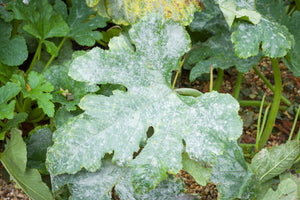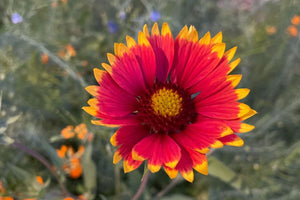Community Gardens: How they benefit the community and how to join in
Types of gardensA community garden is a unique opportunity for neighbors to work together. A beautiful harvest of food and friendship can develop with some soil, seeds, and a desire to grow together. Every community garden will be a little bit different to meet the needs of the location. But the benefits always come, and you will be able to reap what you sow.

Being part of a community
Gardening doesn’t have to be a solitary endeavor. It can be a social gathering for those who like to share the fun of gardening. Working together in a community garden can help you learn more gardening tips and give you a chance to share your knowledge.
First, we’ll cover the benefits of community gardening and then how to find a community garden near you. If you can’t find one to join, there are resources to start your own. And finally, of course, you’ll need to know what to grow in your community garden.

Benefits of a Community Garden
Many benefits of a community garden are easy to see. Like neighbors working together, a vacant lot turned into a beautiful space and increased local biodiversity.
Other benefits are not easily seen, but they are felt, and the effects are immeasurable. Improved mental health, local pride and cooperation, relief from stress, and improved relationships are some of the less visible benefits of a community garden.
When a community has a garden, they have access to fresh, nutritious food, which can help to reduce obesity and increase vegetable intake.
A community garden can donate its produce to organizations like Ample Harvest that link up food pantries with gardeners.
Community gardens can even decrease crime rates. That’s a lot of good coming from some soil and seeds!
Any one of these outcomes is reason enough to start or join a community garden. But when you see that all these things can happen, community gardens become something worth championing.

How to Find a Community Garden Near You
With all these community gardening benefits, you’re probably wondering how you can join a garden near you. Of course, the quickest way is to search “Community Gardens Near Me” online.
However, not all community gardens are listed publicly or advertised in a way to show up in search results.
So here are some other ways to find a local community garden to join:
Libraries - Your local librarian might have some resources to point you in the right direction. Libraries can also be where flyers are posted, or gardening groups meet.
National Website - The American Community Gardening Association lists community garden locations on its website.
Churches - Some churches will organize gardens to help feed their local congregations or to donate to food banks.
City or County Services - Your city or county government may have information about groups that are working on providing fresh food for those in need.
County Extension Offices - Your local extension office knows all about gardening. They’re your go-to resource for gardening questions. They may also be aware of groups involved in community gardening and their locations.
Schools - Universities often have land they use for agriculture. Find out if your local university, or even high school, rents out plots or has a garden space for students or families.
Local garden club - Gardening clubs are a great way to meet people with a passion for growing. They may know who’s doing what in your city.
Online gardening groups - These online groups offer a way for gardeners to ask each other questions.

How to Start a Community Garden
Can’t find a community garden to join? How about starting one?
Maybe you’ve seen a vacant lot in your neighborhood and thought it would be an excellent spot for a garden. Now’s your chance to start your own community garden. So how do you get started with creating one?
It starts with finding a space and gathering the community. These two things will determine where and how you plan your garden.
The University of Missouri has compiled a detailed resource for starting a community garden. The Community Gardening Toolkit covers everything you need to know to have a successful gardening experience.
Another excellent resource is the Community Garden Start-Up Guide from the University of California.
These resources will guide you step-by-step through the process of creating a successful community garden.

What to Grow in a Community Garden
Once you find a community garden or start your own, you’ll need to decide what to grow.
Choosing what to grow in a community garden will depend on what plants are well suited for your growing zone and your taste preferences.
You will also want to consider the frequency that you will be visiting the garden. For example, can you pick beans every few days?
Don’t forget about adding herbs and flowers. Herbs are an excellent choice since they greatly improve the flavor of vegetables and are so much more expensive to buy. Flowers will help draw in beneficial pollinators to increase crop yields.
Everything is better when you grow it yourself, so you can’t go wrong with any vegetable choice.
Here are some options to get you started:
Tomatoes - There’s nothing better than homegrown tomatoes. So tomatoes are always an excellent choice.
Winter squash - You don’t have to fuss over squash. Also, it will give you a harvest that can be stored in the winter months.
Kale - Kale is so low maintenance and incredibly healthy that it deserves a spot. It also grows in cold weather, so it's easily planted in spring or fall.
Onions - Onions are the base of so many delicious recipes. And with this no-maintenance vegetable, you’ll have an easy harvest.
Beets - Both the leafy green tops and the bulbs can be eaten.
Peppers - Both hot and bell peppers grow well in the warm summer months. Try different levels of heat or the sweet flavors and colors of bell peppers.
Beans - From a small plant, you can grow an abundance of delicious green beans.
Lettuce - Quick-growing lettuce produces plenty to share.
Radishes - These are small and quick growing. Easy to tuck into all kinds of garden spots.
Zinnias - Flowers will help encourage more pollinators to visit your garden.

At Sow Right Seeds, we’ve seen the good that community gardens can do, and we love supporting them. The benefits of community gardens make them worth the effort. They create a healthier environment and healthier communities. Finding a garden community to join will benefit you and others.
If you have more questions about community gardening or a success story to share, we’d love to hear from you.







Leave a comment